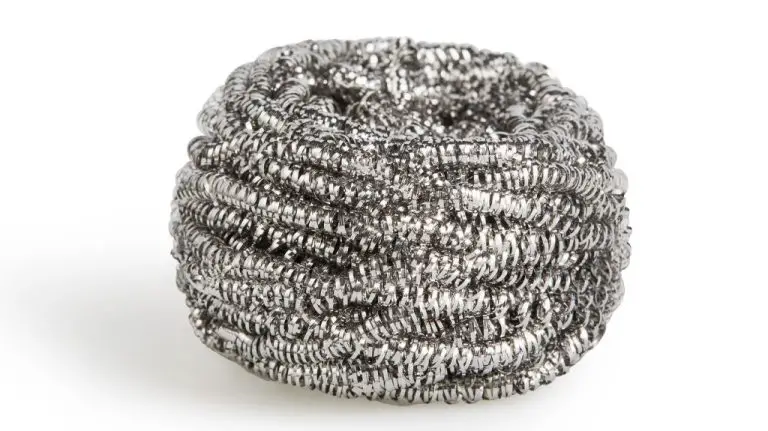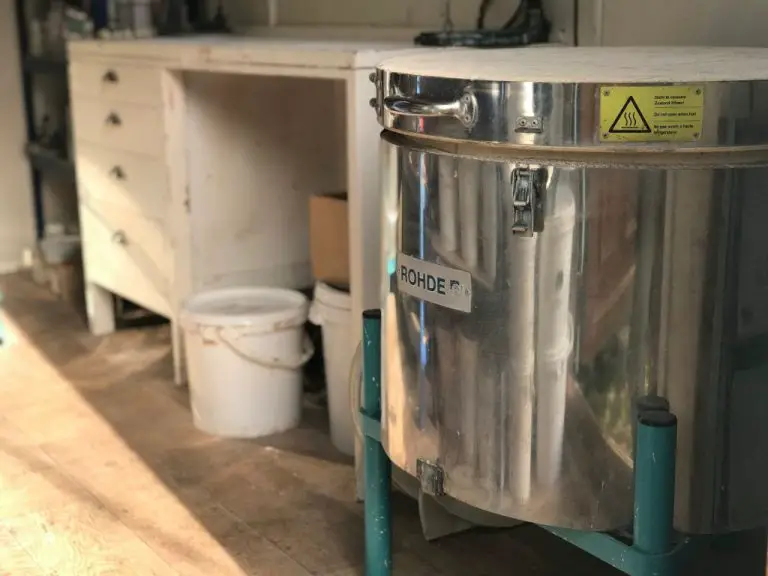How Do You Shape A Rose Clay?
Rose clay is a type of polymer clay that can be shaped and sculpted into many different forms. It is made from a plasticized material that allows it to be molded by hand. Rose clay remains flexible while being worked on, but hardens when baked in an oven. Once cured, rose clay sculptures become durable and strong.
The unique flexibility and workability of rose clay makes it ideal for home crafting projects. From jewelry to decorative pieces to miniature figurines, rose clay allows endless creative sculpting possibilities. This guide will cover the basics of working with rose clay, from gathering materials to shaping, smoothing, and baking your finished creations.
Gather Materials
To shape rose clay, you’ll need the following materials:
-
Rose clay – This is an air-dry clay specifically formulated to capture intricate details like rose petals. Look for clays that are non-toxic and easy to shape.
-
Clay sculpting tools – You’ll want an assortment like loops, ribs, rollers, dotting tools, knives, and cutters to shape the clay.
-
Rolling pin – Helpful for rolling out clay evenly and applying texture.
-
Clean work surface – This can be a table covered in wax paper or canvas. You want a smooth, nonstick surface.
-
Containers for water – Keep water on hand to keep clay moist and tools clean.
-
Paper towels or soft cloth – For cleaning up messes and hands.
Prior to starting, make sure you have gathered all necessary materials and set up a comfortable workspace with good lighting.
Prepare the Clay
Properly preparing polymer clay is an important first step before shaping your roses. Start by kneading and wedging the clay to warm it up and make it soft and pliable. Kneading helps distribute pigment evenly throughout the clay and removes air bubbles that can cause cracking or weak areas in the finished piece.
Wedge the clay by folding it over itself, pressing down firmly to push out air pockets. Repeatedly knead and wedge until the clay is smooth, uniform in color, and has the consistency of firm dough. Avoid overworking the clay, as too much kneading can cause it to become sticky.
The clay should be soft enough to easily shape without cracking, but firm enough to hold its form as you sculpt the roses. Properly conditioned clay will produce smooth surfaces and crisp details in the final pieces.
Basic Shapes
When working with rose clay, there are a few basic shapes that are easy to start with. These include balls, coils, and slabs.
Balls
Balls are a simple round shape and one of the easiest forms to make with clay. To make a ball, start with a lump of clay and roll it between your palms while applying even pressure. This will smooth the clay into a sphere. You can make balls of various sizes, from tiny marbles to larger ornaments.
Coils
Coils are formed by rolling clay into long tube or snake shapes. Pinch off a piece of clay and roll it back and forth on a flat surface while applying pressure. This will elongate the clay into a coil shape. Coils can be used to add details like hair or furniture legs, or joined together to form bowls, vases, and other vessels.
Slabs
Slabs are flat pieces of clay rolled to an even thickness. To make a slab, use a rolling pin or acrylic rod to roll out the clay until flattened. Slabs allow you to create flat surfaces like tablet shapes or tiles. Cut the slab into any shape using cookie cutters or a craft knife.
When first learning to shape rose clay, practice making each of these basic forms. Balls, coils, and slabs will be the foundation for most clay projects. Refer to images online or in clay books to see examples.
Add Details
Adding details and textures to your rose clay sculpture can make it look more realistic and life-like.
To add vein details to rose petals, use a dull knife or toothpick. Gently press into the petal to create indentations for veins. Work slowly and carefully to get the details right.
For a ruffled or rolled edge on petals, use your fingers or a sculpting tool to pinch and manipulated the edges into shape.
To add texture to leaves or stems, press your selected texture tool (like a comb, fork, or rubber stamp) lightly into the surface. You can also use a stiff brush or toothbrush.
For a glazed pot or vase, add horizontal lines with a knife or use a sponge for dabbing effects. Practice first on scrap clay.
Consider adding other details like small thorns on stems, imperfections on petals, or patterns on leaves. Work slowly and let the details develop as you sculpt.
Lightly brushing the petals and leaves with a stiff brush will also enhance the texture.
Don’t overwork the clay as you add details. If the clay becomes too thin, let it rest before continuing.
Joining Pieces
When working with clay, you’ll often want to join separate pieces together to create a cohesive whole. There are a few techniques for securely attaching coils, slabs, and other clay components.
If the clay is still soft and workable, you can simply press the pieces firmly together, blending and smoothing the seams. Using a clay modeling tool, knife, or your fingers, work the clay from both sides to meld the pieces. Moisten the clay slightly with water or clay slip first to help it stick and merge smoothly.
For added structure and stability, you can also insert clay slip into the seam. Clay slip is simply watered down clay that can act as a “glue.” Just dip your modeling tool into some slip and spread it along the areas you want to adhere before pressing them together.
Another option is to score or scratch the clay surfaces before joining them. Use a knife, toothpick, or other tool to cross hatch grooves into the clay, which gives the slip something to grip onto. Apply slip to one or both scored surfaces, then firmly press together.
For joining clay when it’s partly dry or fragile, liquid clay or commercial clay glues are good options. Brush or spread the adhesive onto both pieces, let it become tacky, then press together. The glue should bridge the pieces nicely. Allow proper drying time so joints are strong.
Smoothing
Once you have shaped and joined your rose clay pieces, it’s time to smooth over any imperfections. This gives your finished piece a polished, professional appearance. Work systematically around the sculpture, looking for bumps, ridges, gaps, or uneven areas. Start with larger smoothing motions using your fingers, a silicone tool, or foam smoother to even out the overall form.
Switch to smaller smoothing tools like a rounded modeling tool, loop tool, or toothpick as you work on finer details. Gently press and smooth over lines and gaps, blending the clay together for a seamless look. Take care not to over-work an area, which can distort the shape. Lightly brush over the surface occasionally with water to keep it workable.
Pay close attention to making smooth transitions where pieces join. Make sure edges blend together cleanly. Refine shapes and add subtle contours as needed while smoothing. Work slowly and carefully. Let gravity help smooth by holding the piece upright while pressing from top to bottom.
Smoothing the clay well now avoids having to sand later. Take your time with this step for the best results. Rotate the sculpture frequently to check for problem spots. Once the entire surface is free of flaws, you can move onto drying and baking for a sturdy finished rose clay sculpture.
Let Dry
Proper drying is a crucial step to ensure your rose clay sculpture doesn’t crack while baking or during handling after it’s done. The drying time will depend on factors like the size and thickness of your sculpture, as well as the humidity and temperature of your environment. Here are some tips for effective drying:
– Allow adequate drying time – small pieces may only need 24 hours, while large or thick sculptures can take 3-5 days to dry thoroughly. Drying happens from the outside-in, so the interior of a thick piece will take longer to dry out.
– Place the sculpture in a warm, dry area out of direct sunlight. Sunlight can over-dry the surface. An ideal room temperature of around 70°F is best.
– Avoid drafty areas that can cause uneven drying.
– Consider using a food dehydrator on low heat to speed up the process for large pieces if you’re impatient, but never exceed 100°F.
– Turn pieces periodically so all sides dry evenly.
– Do not stack or box pieces until fully dry.
– Check for dryness by feeling the surface and lifting pieces gently. The clay should be cool to the touch, lighter in weight, and have no visible moisture.
– When thoroughly dry, the clay will be firm but not brittle.
Taking the time to let your rose clay dry properly will help prevent cracking and other issues later on. Be patient and allow time for ample drying based on the size and thickness of your sculpture.
Bake the Rose Clay
Once your rose clay creation is fully dried, it’s time to bake it to harden and set the clay. Proper baking is important for getting your finished clay piece to have the right consistency and durability.
Before baking, first review the packaging your clay came in for the baking instructions. In general, rose clay should be baked at temperatures between 265-275°F for 15-30 minutes per 1/4 inch of thickness. Use an oven thermometer to check that your oven is at the right temperature.
Set a timer when you put your clay in the oven. It’s essential not to under-bake the clay, as it will remain soft and fragile. Over-baking can cause discoloration or brittleness. Carefully monitor the baking time based on your clay’s thickness.
Allow the clay to cool completely before handling so it sets properly. Once cooled, your rose clay creation will have a nice hardness while still retaining some flexibility. Enjoy your finished clay piece!
Finish
After baking the clay pieces, there are a few finishing touches you can add. Sanding the pieces will help smooth out any rough edges or small bumps in the clay. Start with a coarse grit sandpaper like 120 and work up to a fine grit sandpaper like 400 for a smooth finish.
You can leave natural clay as-is or add color with acrylic paints. Make sure to use paints formulated for clay and bake pieces again after painting to seal in the color. You could also use chalk pastels, powdered pigments like mica powder, or alcohol inks to color the clay.
Adding a clear finish like polyurethane, epoxy resin, or varnish will help protect painted pieces and give them a glossy finished look. Make sure to use products specifically meant for clay. Spray sealants like acrylic sealer in a matte or gloss finish also work well. Apply in thin coats and allow to fully dry between coats.
With some simple finishing techniques, you can smooth, color, and seal your finished clay pieces. The finishing process allows you to perfect the look of your clay creations.


